At SpeedX Marketing, we are a leading provider of innovative IT solutions tailored to meet your specific business needs. With years of expertise and a team of skilled professionals, we offer cutting-edge technology solutions that drive growth and efficiency.

You’ve been working hard on your website, making sure it has the right content and structure to attract visitors. But how can you tell if those visitors are the ones you actually want? By tracking the right things, you can see if your website is working like a magnet, pulling in the perfect audience and making them feel right at home.
Measuring SEO success is vital to assess the outcomes of your optimization steps and measure their influence on critical aspects of your online presence. By systematically evaluating key performance indicators (KPIs) such as organic traffic, keyword rankings, conversion rates, and backlink quality, you gain actionable insights into the effectiveness of your SEO strategies. This assessment not only helps in understanding the current state of your website’s visibility but also guides strategic adjustments to enhance its performance. The process empowers businesses to adapt to evolving search engine algorithms, stay ahead of competitors, and ensure that their online efforts align with broader business objectives. In essence, measuring SEO success provides a data-driven foundation for informed decision-making, enabling continuous refinement and optimization for sustained digital growth.
The timeline to measure SEO success varies depending on several factors, including the competitiveness of the industry, the current state of the website, and the scope of optimization efforts. While some initial indicators of improvement can be observed within a few weeks, achieving substantial and sustainable results often requires months of consistent effort. It’s essential to recognize that SEO is an ongoing process, and the impact of optimizations may unfold gradually over time. Long-term success involves continuous monitoring, adaptation to algorithm changes, and the persistence to refine strategies based on evolving market dynamics. Patience is key when measuring SEO, as the journey toward improved visibility, organic traffic, and search rankings is a gradual, cumulative process that demands strategic consistency and adaptability.
Having a clear vision for your SEO campaign’s ultimate objective is paramount. This objective will dictate the specific tactics employed and the success metrics you track. For instance, an affiliate website aiming to generate revenue through product referrals will prioritize metrics like click-through rates and affiliate conversions. Conversely, an e-commerce website will focus heavily on conversion rates within their own store, measuring how effectively website traffic translates into sales. Similarly, a news website might prioritize unique visitors and time spent on site to gauge audience engagement, while a lead generation website might track form submissions and qualified leads. Even within these categories, further refinement exists. A travel blog might aim for high rankings for location-specific keywords to attract local readers, while a business blog might target industry-specific terms to establish thought leadership. Defining your end goals ensures your SEO efforts are laser-focused on achieving the desired outcome.

Just like the compass guiding a ship, Key Performance Indicators (KPIs) serve as crucial metrics to measure an SEO campaign’s effectiveness. These quantifiable measurements directly connect to your overarching goals.These quantifiable metrics are pivotal in deciphering the success and impact of an SEO campaign, offering insights into various aspects of online visibility and user engagement. Key indicators, such as organic traffic, keyword rankings, conversion rates, and backlink quality, allow marketers to assess the performance of their optimization efforts. By inspecting these KPIs, businesses gain a comprehensive understanding of their online presence, enabling informed decision-making and the refinement of SEO strategies for enhanced visibility, user experience, and ultimately, business growth. In essence, these indicators serve as navigational tools, guiding businesses through the intricate landscape of digital competitiveness and ensuring their efforts align with overarching goals.
A website’s position in Search Engine Results Pages (SERPs) across various categories like web results, images, videos, and news can give an idea of how well your website is performing. It could be the first thing you should analyze while measuring SEO success. Ranking higher indicates greater visibility and organic traffic. Imagine a SERP as a search query’s billboard; the top positions (usually ten blue links) receive the most attention.
Tracking your website’s position involves monitoring its average rank for relevant keywords, including both branded and unbranded terms. Tools like Google Search Console can be used to analyze this data. Understanding your SERP performance across these categories allows you to identify areas for improvement and ultimately drive more qualified traffic to your website.
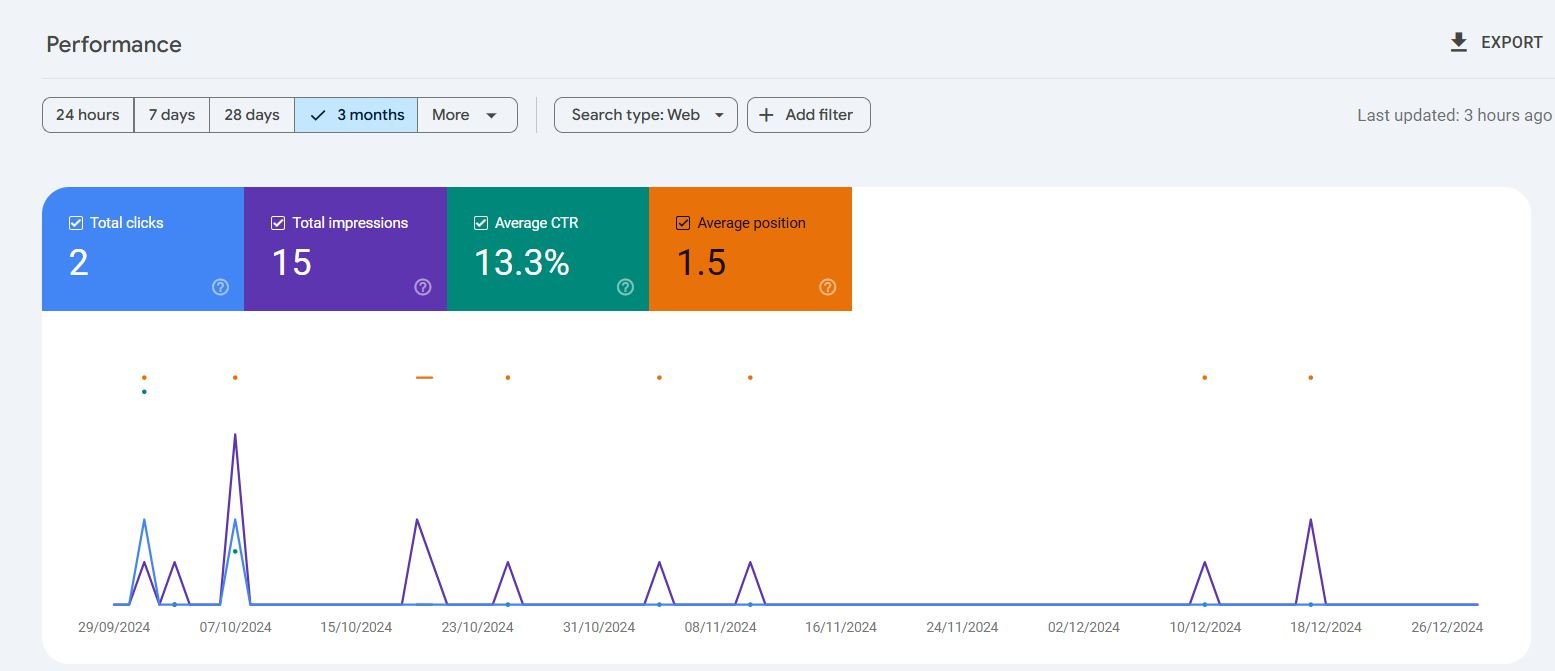
You can compare web, images, and news SERP in Google Search Console (GSC) performance in different time frames.
The number of visitors who reach your website by browsing a query or by clicking on unpaid organic search results account for organic traffic. Monitoring the organic search traffic is crucial for assessing the effectiveness of your SEO efforts. But, how can we measure organic traffic? There are so many tools to measure organic traffic. Google Analytics is the most powerful tool provided by Google that provides detailed insights into various aspects of website performance, including organic traffic. This free tool allows you to track the sources of your website traffic, identify the keywords driving visits, and understand user behavior. With Google Analytics, you can measure the impact of your SEO strategies by observing trends in organic search traffic over time, identifying the pages that are most visited, and making data-driven decisions to enhance your website’s visibility and user experience.
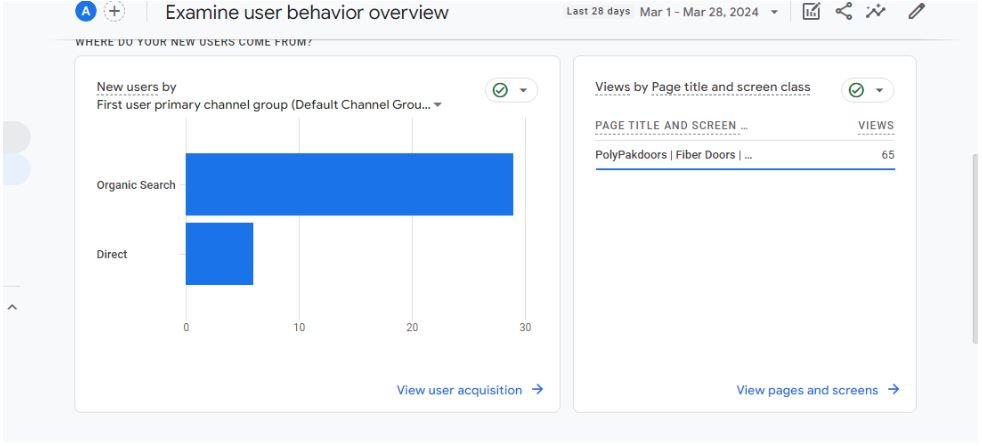
You can track the devices that are bringing in more organic traffic, as well as users’ locations and much more.
Determining the volume of traffic originating from search engines is essential. Google Analytics provides a comprehensive tool for this purpose.
Google Analytics offers an abundance of data, which can be overwhelming without proper navigation. Although not exhaustive, here’s a general overview of the traffic data available through this free tool:
1. Analyzing Organic Traffic: Google Analytics enables the isolation of organic traffic, allowing you to monitor its performance independently. This helps distinguish changes in other channels from organic traffic fluctuations.
2. Monitoring Site Traffic Over Time: You can track the total number of sessions, users, and pageviews over specified time periods using Google Analytics. Additionally, it allows for comparison between different date ranges.
3.Assessing Page Visits: Through Site Content reports, you can evaluate the traffic performance of specific pages. This includes insights into the number of unique visitors a page receives within a selected timeframe.
4.Tracking Campaign Traffic: By incorporating UTM (Urchin Tracking Module) codes into your URLs, you can attribute traffic to specific campaigns accurately. These codes, which specify the source, medium, and campaign, help identify the effectiveness of your marketing efforts. The data collected through UTM-coded links populates in Google Analytics’ “campaigns” report, providing valuable insights into campaign performance.
For those seeking more advanced features and in-depth analytics, there are also paid tools available, such as SEMrush, Moz, and Ahrefs. These tools offer comprehensive SEO suites that not only track organic traffic but also provide competitive analysis, keyword research, and other valuable insights to optimize your overall search engine performance. While Google Analytics is an excellent starting point for many businesses, investing in paid tools can offer more detailed and specialized data for those looking to elevate their SEO strategies to a higher level.
Examining search traffic is crucial in SEO analysis. While ranking well in search engine results is important, it’s not the only metric that matters. The ultimate aim is to attract visitors who find your website valuable in answering their queries. If your site ranks high but fails to attract traffic, it indicates an issue.
Keyword rankings are like signposts directing internet users to your website. These are the terms people type into search engines, and where your site lands in the results matters. It’s crucial to track your website’s ranking for target keywords using tools like Ahrefs, SEMrush, or Google Search Console. By knowing where you stand against competitors and monitoring progress over time, you can adjust your content to optimize for better rankings. The goal is to appear on the first page of search results, preferably near the top, as many users click on the first result. Utilize Google’s free keyword planning tool to understand which keywords to target and how competitive they are. Additionally, keep an eye on SERP features like “Also asked” questions, knowledge panels, and reviews, as they can boost your site’s authority and visibility in search results. Overall, tracking keyword rankings is key to enhancing your website’s visibility and attracting organic traffic.
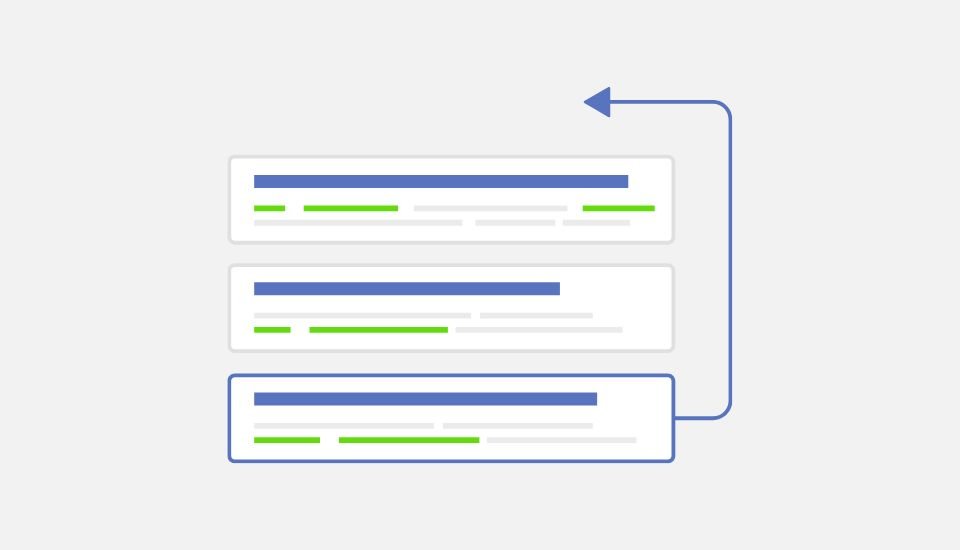
It is imperative to monitor keyword rankings based on intent and end-term objectives across various types of websites. For instance, an e-commerce platform specializing in fitness equipment must prioritize tracking keywords related to its products such as “best home gym equipment” or “exercise machines” to directly influence sales and revenue. Similarly, a travel-focused blog would benefit from monitoring rankings for informational queries like “best places to visit in Europe” or “travel tips for solo backpackers” to boost organic traffic and establish authority. Conversely, a local bakery should concentrate on location-specific keywords such as “best bakery in [city name]” or “fresh pastries near me” to attract potential customers within its vicinity. By aligning keyword tracking strategies with the goals and target audience of each website type, it becomes possible to gauge performance effectively and achieve desired outcomes.
1. Select Target Keywords: Identify the keywords or phrases that are relevant to your website and align with your SEO goals.
Choose a Ranking Tool: Utilize SEO tools such as SEMRush, Ahrefs, Moz, or Google Search Console to track keyword rankings. These tools provide insights into your website’s performance in SERPs and allow you to monitor changes over time.
3. Monitor Rankings Regularly: Regularly monitor your website’s keyword rankings to track fluctuations and identify trends. This may involve daily, weekly, or monthly tracking depending on your specific needs.
4.Analyze Results: Analyze the data to understand which keywords are performing well and which ones may require optimization. Look for patterns, such as seasonal fluctuations or changes in search trends, that may impact your rankings.
5.Take Action: Based on your analysis, take actionable steps to improve your rankings, such as optimizing content, building quality backlinks, or adjusting your SEO strategy accordingly.

Click-Through Rate (CTR) is a key metric that measures the percentage of people who click on your website’s link after seeing it in search results. It’s crucial because a higher CTR usually suggests that your content is both relevant and engaging to users. Essentially, it indicates that your website is attracting the attention of searchers and encouraging them to explore further. To measure CTR, you can utilize tools like Google Search Console, which provides data on how often your pages are clicked for different queries. By analyzing this information, you gain valuable insights into the effectiveness of your content and can make informed adjustments to improve user engagement and visibility in search results. In simpler terms, a healthy CTR means more people are interested in what you offer, contributing to increased online success.
Conversion rate is a critical metric that reveals the percentage of website visitors who successfully complete desired actions, such as making a purchase or filling out a contact form. The importance of monitoring conversion rates lies in understanding how effectively your website is turning visitors into customers or leads. A higher conversion rate indicates that your site is resonating well with your audience and compelling them to take the desired actions.
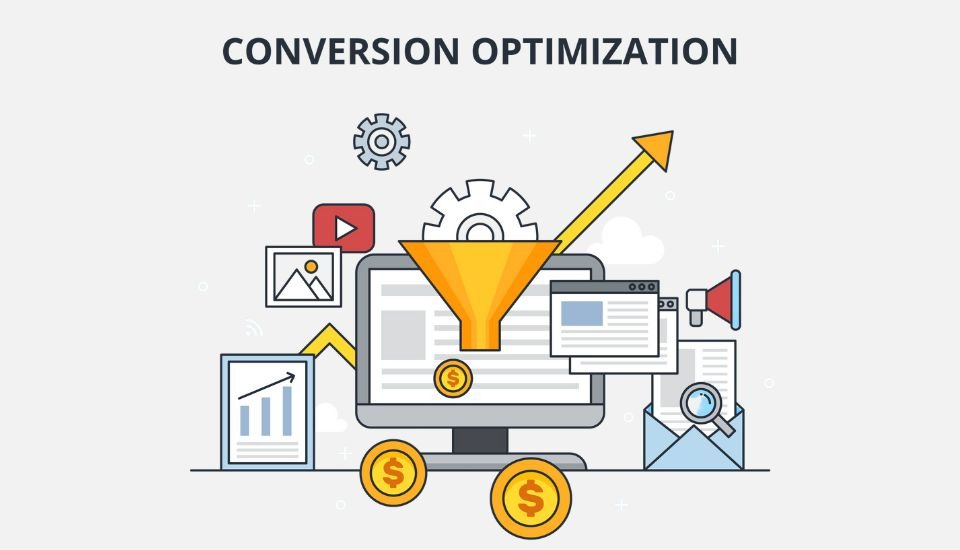
Strategic Decision-Making: Analyzing the right conversion allows businesses to make informed decisions regarding website optimization and marketing strategies. By focusing on conversions that directly contribute to business objectives, resources can be allocated efficiently to maximize returns.
Accurate Performance Evaluation: Measuring the right conversions ensures accurate assessment of website performance and campaign effectiveness. It provides insights into the effectiveness of marketing efforts and helps identify areas for improvement to enhance overall conversion rates.
3. Enhanced User Experience: Understanding and analyzing the appropriate conversions enables businesses to tailor the user experience to meet customer needs and expectations better. By optimizing for relevant conversions, websites can deliver a seamless journey, increasing user satisfaction and loyalty.
Recognizing the need for tailored conversion rates across different websites and analyzing the right conversions are essential components of effective digital marketing strategies. It enables businesses to align their efforts with specific objectives, accurately evaluate performance, and ultimately enhance the user experience, driving long-term success.
Regularly assessing and optimizing your conversion rate ensures that your website not only attracts visitors but also persuades them to take the intended steps, ultimately contributing to the success of your online goals.
On-page metrics play a pivotal role in evaluating the effectiveness of your website’s content and user experience. Three crucial metrics to focus on are bounce rate, time on page, and pages per session. These metrics offer insights into how users interact with your site and can indicate the quality and relevance of your content.

Evaluating technical SEO health is crucial for measuring SEO success. Regular audits, focusing on factors like crawl errors, broken links, and site speed, ensure a website’s optimal performance. Leveraging tools such as Google Search Console, Screaming Frog, or Sitebulb allows for comprehensive assessments, helping address issues proactively and contribute to improved search engine rankings and user experience. A well-maintained technical foundation is key to achieving and sustaining SEO success.

Crawl errors occur when search engine bots encounter difficulties accessing and crawling specific pages on your website. These errors can negatively impact your SEO by preventing search engines from properly indexing your content. To measure SEO success in this regard, utilize tools like Google Search Console, which provides insights into crawl errors. Regularly check for crawl issues and address them promptly to ensure optimal visibility in search results.
Broken links, or 404 errors, occur when visitors click on a link that leads to a non-existent page. These can harm user experience and impact your SEO. Tools like Screaming Frog or Sitebulb can help identify broken links during technical SEO audits. By regularly monitoring and fixing broken links, you enhance user satisfaction, contribute to a positive website experience, and positively influence search engine rankings.
Site speed is a crucial factor influencing user experience and search engine rankings. Slow-loading pages can lead to higher bounce rates and lower rankings. To measure SEO success in terms of site speed, employ tools like Google PageSpeed Insights. Conduct regular assessments to identify areas for improvement and optimize elements such as image sizes, server response times, and code efficiency. A faster website not only enhances user satisfaction but also positively impacts your search engine visibility.
Domain authority and page authority are crucial metrics in measuring SEO success as they provide insights into the overall strength and credibility of a website and its individual pages. Domain authority assesses the overall authority of a website’s domain, considering factors like the number of quality backlinks, domain age, and overall content quality. On the other hand, page authority evaluates the strength of individual pages within the website, focusing on factors such as the number and quality of inbound links and the relevance and depth of content. By tracking these metrics, SEO practitioners can gauge the effectiveness of their optimization efforts over time. Tools like Moz’s Domain Authority and Page Authority scores offer numerical values that indicate the relative strength of a domain and its pages respectively, allowing SEO professionals to benchmark performance, identify areas for improvement, and track progress towards their goals.
Measuring SEO success based on backlink quality entails a comprehensive evaluation of various factors. Firstly, assessing the relevance of backlinks to the website’s niche or industry is crucial, ensuring they originate from authoritative domains with high domain authority scores. Additionally, analyzing the diversity of anchor texts and the naturalness of link acquisition patterns provides insights into the credibility of the backlink profile. Monitoring metrics such as the number of referring domains, referring IPs, and the ratio of dofollow to nofollow links offers a comprehensive understanding of backlink quality. Furthermore, considering contextual relevance and the editorial nature of backlinks contributes to determining their impact on organic search visibility and ranking performance. By employing a multifaceted approach to evaluate backlink quality, businesses can effectively measure SEO success and make informed decisions to optimize their link-building strategies.

Analyzing local SEO performance involves a multifaceted approach, encompassing the monitoring of local search rankings, online reviews, and business listings. By focusing on the optimization of a Google Business Profile and maintaining consistent NAP (Name, Address, Phone) information across platforms, businesses can significantly impact their local search visibility. Monitoring local search rankings provides insights into the effectiveness of local SEO strategies, while online reviews offer valuable feedback and influence consumer trust. Optimizing the Google Business Profile ensures accurate and up-to-date business information, contributing to improved local search rankings. Consistent NAP information across online platforms reinforces a business’s credibility and trustworthiness. These practices collectively contribute to a comprehensive assessment of local SEO performance, guiding businesses in refining their strategies for enhanced local visibility and customer engagement.
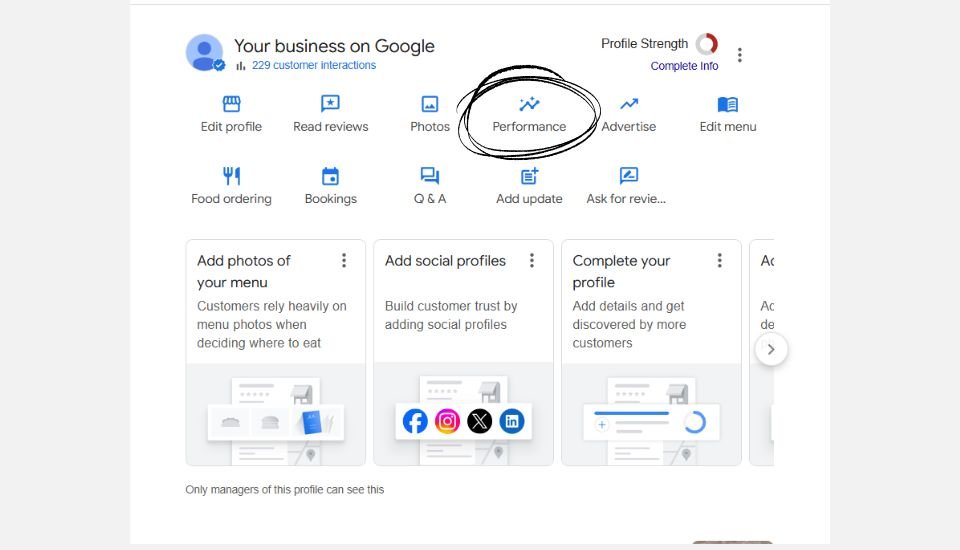
Local SEO success varies for different businesses; for instance, restaurants may prioritize driving directions and calls, while salons or doctors may focus more on appointment bookings and inquiries.
Measuring SEO success involves a comprehensive evaluation of various key aspects to ensure a website’s optimal performance and visibility. Establishing specific goals and utilizing key performance indicators (KPIs) such as organic traffic, keyword rankings, conversion rates, and backlink quality provides actionable insights into the effectiveness of SEO strategies. The process includes tracking organic traffic using tools like Google Analytics, evaluating keyword rankings and adapting content accordingly, and monitoring conversion rates for user engagement. Backlinks play a crucial role in indicating a website’s authority and are assessed by their quantity and quality through tools like Ahrefs or Moz. Furthermore, local SEO performance is measured by analyzing local search rankings, online reviews, and business listings. Regular technical SEO audits, considering factors like crawl errors, broken links, and site speed, contribute to overall success. In essence, the continuous monitoring and adaptation of these metrics contribute to sustained digital growth and improved online visibility.

